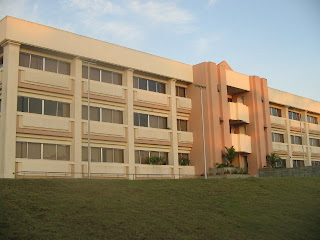


Caraga derived from the word Calagan. In a book “Historia de Mindanao y Jolo” published in 1667 Fr. Francisco Combes, S.J., wrote that the name Calagan is derived from two Bisayan words....’kalag’ which means soul and ‘al’ for land. Thus, Calagan means “The Land of spirited and courageous people”. Both Pablo Pastells, S.J. and Sebastian de Oporto, described the inhabitants of Caraga as fearsome, hostile, treacherous, and warlike.
Since there is no ‘k’ in the Spanish alphabet, the ‘c’ is used for Bisayan words with ‘K’ in them. So, ‘kalag is written as Calag’, likewise, Kalagan’ as ‘Calagan’. Later, Calagan became Caraga.
On February 6, 1624 Governor General Alfonso Fajardo divided the island of Mindanao into two big sections, to avoid conflict over jurisdictions. The giant eastern portion of Mindanao Island comprised the “Provincia de Caraga”, and it was almost one-half of the entire island that comprised the province that constituted a portion of Misamis Oriental (from Gingoog), Agusan, Surigao and partly from Vergara.
In 1860, through a Royal Decree, Mindanao fell under one politico-military government and it was finally subdivided into 6 districts: Primero Distrito (Zamboanga), Northern District (Cagayan/Misamis), Eastern District (Caraga-Agusan/Surigao), Fourth District (Davao), Central District (Bukidnon/Cotabato), and South District (Basilan).
The Eastern District later known to become the province of Surigao, hence, the collective name of the old Caraga province was forgotten. A town in Davao Oriental of today carries the name Caraga but it does not refer to the new region at present.
In 1898, Agusan otganized a single-politico commandancia named Butuan, later on became a sub-province of Surigao...and in 1907, Agusan became a separate province. Its capital was Butuan which became a chartered city on August 2, 1950 by virtue of RA 523 authored by Congressman Marcos M. Calo. Further the province of Agusan was divided into two..AGUSAN del NORTE with BUTUAN CITY as the provincial capital, and AGUSAN del SUR with Prosperidad as its capital, based on the approved RA 4979 dated June 17, 1967.
In the process of regionalization when provinces and citries were grouped into regions, Agusan del Norte Agusan del Sur and Surigao del Norte became as part of Region X.
On February 16, 1995, House Bill #10643, principally authored by Congresswoman Charito B. Plaza of the First District of Agusan del Norte was passed and consolidated with Senate Bill #729 and finally passed by the Senate on February 20, 1995. This was signed into law by President Fidel V. Ramos on February 23, 1005.
Republic Act #7901, an act Creating Region XIII, known as The Caraga Administrative Region, heralded the birth of the Caraga Region with BUTUAN CITY as the regional center. The establishment of the new Caraga Region composed of the provinces of Agusan del Norte, Agusan del Sur, Surigao del Norte, Surigao del Sur and the cities of Butuan and Surigao brought back a large portion of land from the original Provincia de Caraga.




























